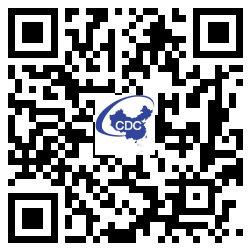《减盐电子周刊》2017年7月13日
发布时间:2017/08/31
2017年7月13日
大家好!
本周的美国疾控中心(CDC)《减盐电子周刊》包含一份美国零食膳食钠摄入量的新研究报告。
美国零食膳食钠摄入量
《Nutrients》杂志发表的一份新研究报告,分析了1977年至2014年零食对钠摄入量的贡献情况。零食对钠摄入的最大贡献发生在最低收入群体和最低教育群体中。从1977年至2014年,最低收入群体中成人和儿童的零食钠摄入从最低水平增长至最高水平。研究期限内,美国成人咸味零食消费量增长了一倍多,儿童咸味零食消费量增长了75%。2014年,百分之二十五的零食钠摄入来自谷物类甜食和咸味零食,非西班牙裔黑人零食钠摄入量高于其他种族群体。本研究发现,1977年至2014年零食钠摄入量呈总体增长趋势,但是在2003-2006年和2011-2014年两个调查时期,源自零食的钠摄入量呈现下降趋势。作者注意到,此研究对美国人口中具体群体的未来政策干预存在影响。
感谢您一直以来对减钠活动的支持。
请注意:
本简讯英文版由美国疾病预防控制中心发布,中文版由骄阳翻译公司翻译,如有歧义,请以英文版本为准。
该信息为与减钠的相关伙伴机构和个人分享将正在进行的减钠活动信息。目的是为相关同仁提供持续更新的信息,并为对减钠工作感兴趣或致力于减钠工作的个人或机构创建一个合作网络。《减盐电子周刊》将每两周发布一期,如果你有任何问题或意见,或者你希望被从该通信人中删除,请联系蔡颖女士(ycai@cdc.gov)。
《减盐电子周刊》在内容上只基于新闻价值和读者的潜在兴趣进行选择。美国疾病预防控制中心对所提供文章的真实准确性不承担任何责任。文章的选择、省略或文章内容并不意味着美国疾病预防控制中心对其内容有支持或其它观点。《减盐电子周刊》中原作者的观点或者引用,完全是其个人观点,绝不代表美国疾病预防控制中心的官方立场。所提及的产品、商业名称、出版物、新闻来源以及网站等,仅作参考之用,并不意味着美国疾病预防控制中心的认可。

July 13, 2017
Hello –
This week’s CDC Salt e-Update includes a new study about dietary sodium intake from snacking in the U.S.
Dietary Sodium Intake from Snacking in the U.S.
A new study published in the journal Nutrients examined how the contribution of snack foods to sodium intake has changed between 1977 and 2014. The largest increase in sodium intake from snacks was seen in the lowest income group and the lowest education group. Adults and children in the lowest income group went from the lowest sodium intake from snacks to the highest from 1977 to 2014. Salty snack more than doubled during the study period in U.S. adults and increased by 75% in children. Twenty-five percent of sodium intake from snack foods came from grain-based desserts and salty snacks in 2014, with Non-Hispanic Blacks consuming a higher intake of sodium from snacks than other race-ethnic groups. The study found an overall increase in sodium intake from snacking between 1977 and 2014, but noted a declining trend in sodium intake from snacking between 2003-2006 and 2011-2014 survey periods. The authors noted that their findings have implications for future policy interventions targeting specific demographic subgroups of the US population.
Access the study. <https://www.ncbi.nlm.nih.gov/pmc/articles/PMC5490589/>
Thank you for your continued engagement in sodium reduction.
We are sending this information in an effort to inform our stakeholders of relevant sodium reduction efforts that are occurring. The purpose of this communication is to provide continued follow up with stakeholders and create a network of partners working on and interested in sodium reduction. The Salt e-Update will be sent every two weeks. For questions or comments, or to be added or removed from this communication, contact Jessica Mullen.
Salt e-Update content is selected solely on the basis of newsworthiness and potential interest to readers. CDC assumes no responsibility for the factual accuracy of the items presented. The selection, omission, or content of items does not imply any endorsement or other position taken by CDC. Opinions expressed by the original authors of items included in Salt e-Update, or persons quoted therein, are strictly their own and are in no way meant to represent the official position of CDC. References to products, trade names, publications, news sources, and Websites are provided solely for informational purposes and do not imply endorsement by the CDC.
附件:
 京公网安备 11010202010327号
京公网安备 11010202010327号
